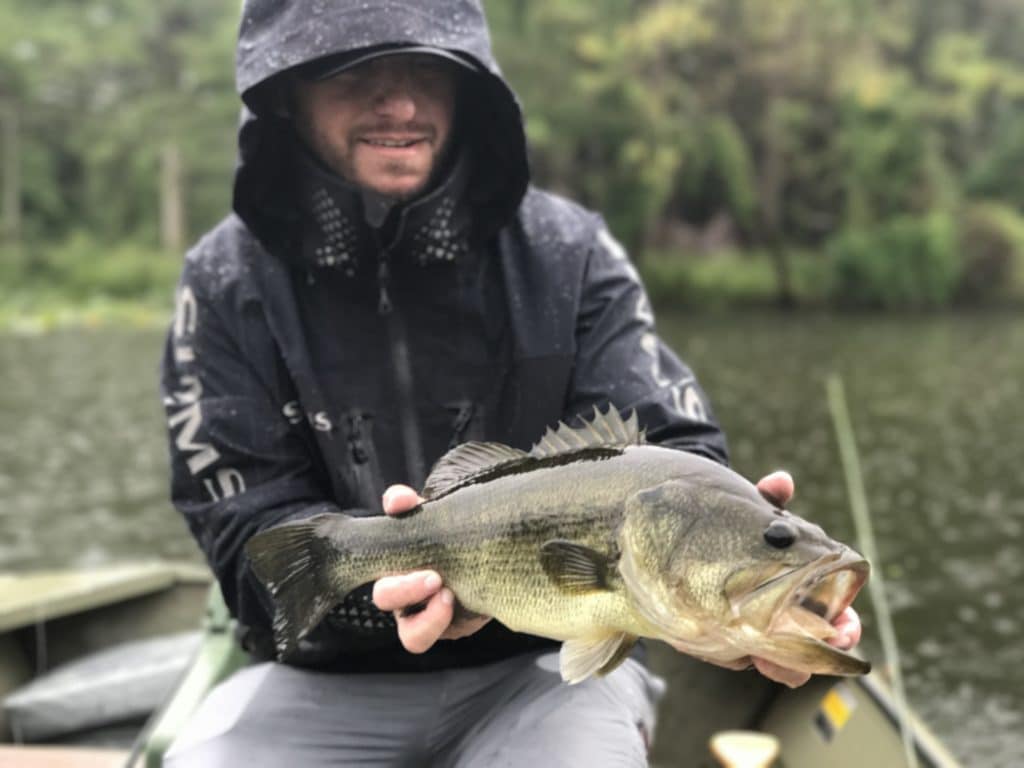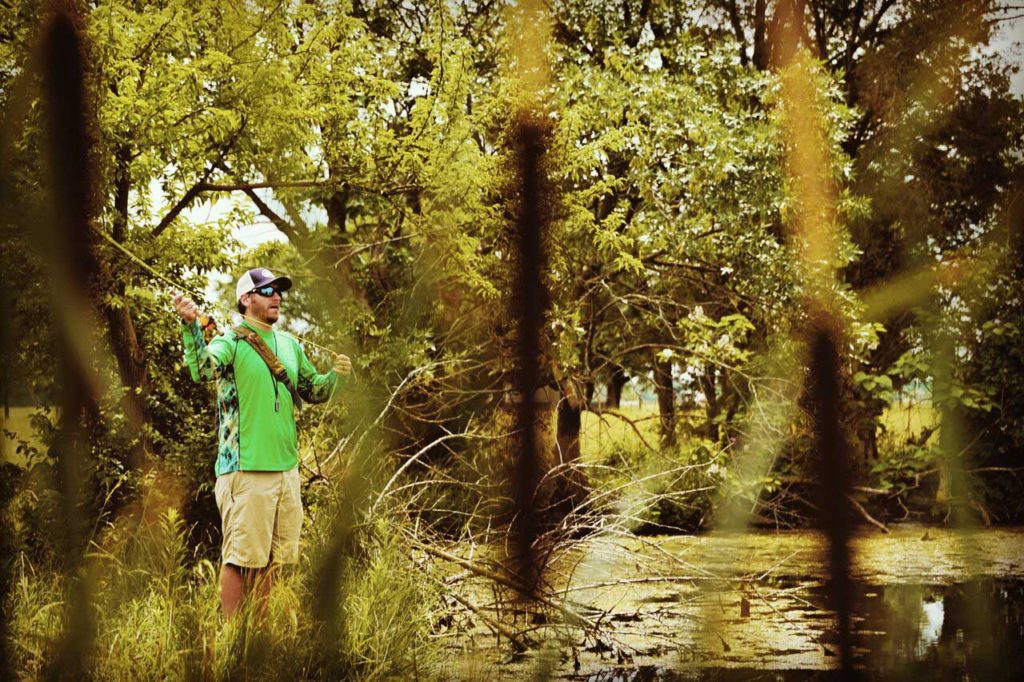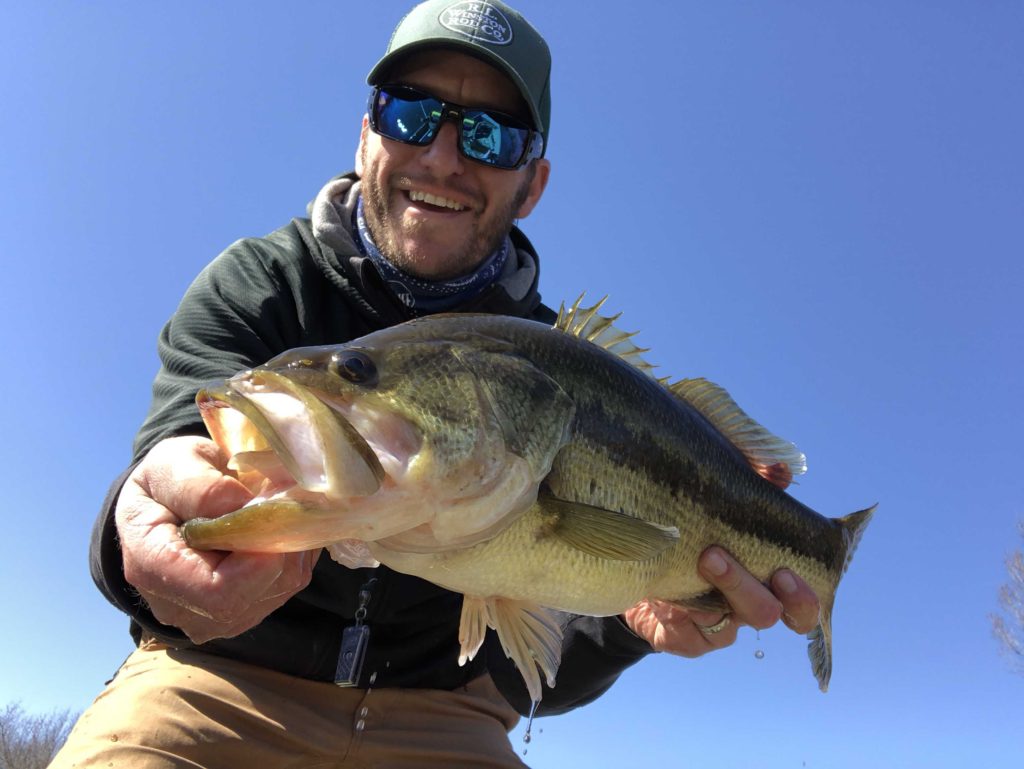
For most you that are reading this, I’d be willing to bet the closest fish swimming to where you’re currently sitting is not a trout. It’s also not a bonefish, tarpon, steelhead or striper. It’s a Largemouth Bass. And sure, I could also lump in Carp, Bluegill, and Catfish to this line up but today we’re going to focus on the fish you should be devoting more time to than you probably are.
Depending on what part of the country you’re in (sans the Northeast) the bitter grip of Winter is slowly becoming a thought of the past and Spring is beginning to take hold. The days are getting longer, and brisk mornings now regularly turn into pleasant afternoons. The arrival of Spring is surely meaning one other thing to countless anglers as well— fly rods that are just begging to be used.
And while the mention of bass fishing undoubtedly brings up countless thoughts/opinions/ stereotypes (insert glittery bass boats, rednecks, and Busch Light) those in ‘the know’, know it is far more than that. Most notably- it is far from an activity that should be reserved for a humid summer evening and popping bug. (although that’s also an absolute blast)
In fact, these next couple months are one of the absolute best times of the year to catch the biggest bass of your life, all the while giving you a good excuse to put the domestic chores aside for another day and dust off the double haul.
Today we’ll break down the topic of spring time pre-spawn Bass fishing into 3 categories:
1) Why spring Bass? 2) Where/how to find them this time of year 3) Fly selection and presentation
WHY SPRING BASS
‘Why’ you should be bass fishing right now is an easy one to answer and can be summed up into two main themes- they’re hungry….and they’re big. Being a cold-blooded animal, a bass is no different than any other freshwater fish in that their metabolism is directly related to the water temperature. As the water begins to warm with the approach of summer, this can send bass into an all-out feeding frenzy. After all, they are a predatory fish in every sense of the word. It’s been a long, cold winter and you can bet they’re just as excited as we are that it’s coming to a close. Additionally, the female bass in your local area waters are as big as they’ll be all year right now with bellies full of eggs that can easily turn that hefty 6 pounder into a lunker 8 pounder. Who doesn’t like the sounds of that?
WHERE AND HOW TO FIND THEM
Alright, now that you’ve decided you probably should take another look at getting the 6 weight out of the closet after months of neglect, finding a place to go shouldn’t be overly difficult. That’s one of the beauties about bass- they live everywhere! One recommendation I would make however is focus on your smaller bodies of water as they will warm up faster than larger ones. The fact that a smaller body of water also gives the fish less room to hide doesn’t hurt anything either. Golf course, farm and your local neighborhood ponds all make great options this time of year. In more good news, finding the fish – or more specifically the actively feeding fish – in these smaller waters is quite simple. You’ll want to focus on the South and Southwest facing banks. These areas on your chosen body of water will be the warmest water available as they receive the most amount of sunshine throughout the day. If you’re fishing a round/circular shaped piece of water, fish the north/northeast end. If you’re looking at an irregularly shaped pond, any twist or turn facing south/southwest will do.
FLY SELECTION AND PRESENTATION
Compared to trout fishing, the topics of fly selection and presentation really couldn’t be much simpler either. When it comes to flies you truthfully only need two patterns this time of year. A baitfish pattern and a ‘bottom crawler’. You can make the baitfish pattern as complicated as you’d like but for me, I rarely have to reach further than my box of Clouser Minnows. In most ponds you’ll fish, baitfish (i.e minnows and sunfish) will be the primary food source for bass, so starting there is always a good choice. Size 4-8 offerings will do the trick and I particularly like to tie mine with lighter weight, small or extra small eyes. These lighter weight eyes slow down the sink rate and allow for more of a suspended presentation between retrieval strips. Most smaller ponds won’t achieve a depth of more than 8-10 feet and remember, you’re looking for actively feeding fish this time of year which are always going to hold up shallower. These lighter weight flies excel in such situations. Vary your retrieve until you find a speed the fish begin reacting to. For me, starting with short, quick strips (using only my wrist) is always my go-to. Being a predator, bass are highly prone to strike out of reaction and this erratic action of the fly can be all it takes to evoke an eat.

A few other thoughts:
1. Experiment with casting angles, but for me, casting at a 45 degree angle from the bank is a
good benchmark. This will keep your fly in the strike zone (typically 2-6 feet deep this time of
year) longer.
2. Cast at anything that looks ‘fishy’ and if you don’t get a strike, cast at it again. Remember, many of the fish you catch are likely striking out of reaction. They’re not sure what your fly is, but they know it matches the profile of something they’ve eaten in the past and if they don’t act now they may miss a meal. It’s not uncommon for your strike to not come until the 3rd or 4th cast at a target.
3. Rocks and Wood are your friends- if you see rocks (whether manmade riprap or naturally occurring) or wood (trees- whether fallen or standing) there is likely fish nearby. Both objects will retain heat from the sun and can warm the water up an extra degree or two immediately nearby. Submerged bushes or brush piles are also always going to hold a fish or two.
4. Cover water- the topic of covering water is something I’ve written about at length in the past for a variety of different fish species, and it applies to bass as much as anything. It may sound overly simple, but in my opinion, is worth repeating. When fishing, you always want to find actively feeding fish. Covering as much water as possible during the day is always the best way to ensure you put your fly in front of as many feeding fish as possible. If you realize you’ve been standing in the same place for 10 minutes, it’s time to pick up the pace.
5. Don’t overthink it. Remember, you’re fishing for a fish that wants to eat your fly. That can’t always be said for countless other species. Keep casting and keep covering water. The results are sure to follow.
6. Focus on the warmest parts of the day when the sun is at its highest point. Get up early, make your better half breakfast, get your chores done and then head to the pond after lunch.

It may sound a bit strange but one of my favorite aspects of fly fishing for bass is that they are not a complicated fish. They fight like heck, are readily available, and absolutely LOVE to eat a fly. I’m sure we’ve all had our frustrating days on a springtime trout stream where difficultly matching the hatch, heavy angling pressure, frozen guides, frozen toes (I could go on) have all led to a day far less than desirable than we envisioned as we begged our significant others to let us skip yard duty and hit the river. Virtually none of this exists on a bass pond. Bass fishing is fun. Plain and simple. And that’s a good thing. This Spring I’d encourage you all to string up your favorite streamer rod, tie on a Clouser, and go hit that local pond you’ve driven by countless times and always wondered what lived in there. I think you’ll quickly see why the largemouth bass is truly America’s favorite game fish.
My go to rods for Pre-Spawn Bassin’ are the 9’ 6 and 7-weight Boron III Plus. For sunny days throwing Clouser Minnows, the 9’ 6 weight Boron III Plus is the ticket. For “Bottom Crawling” on extra windy days, I jump up to the 9’ 7 weight Plus so I can easily cast bulky flies further.
Kyle has fished extensively throughout the Midwest and Rocky Mountains, as well as nearly a dozen saltwater locations and has been on the Winston Pro Staff since 2013. kyle.l.wilkinson@gmail.com


